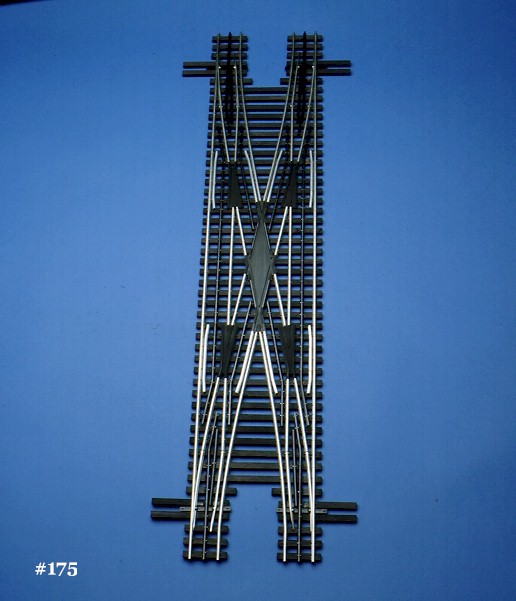This image comes from the Atlas catalog. Does anybody know the track spacing required for it? In other words, what is the dimension center rail to center rail of the parallel straight sections? I’ve Googled this thing to death and apparently the dimensions of the Atlas 45 degree crossover are a closely guarded national security secret.
Replies sorted oldest to newest
8.6" according to RR-Track. You need to use #4 or Regular switches to get closer together.
Looks to be about 8.65" from center rail to center rail
@CAPPilot posted:8.6" according to RR-Track. You need to use #4 or Regular switches to get closer together.
Thanks, Ron. I appreciate you laying it out on the software. I’ll check out a #4 switch. What is a regular switch? Thanks again for the prompt help.
@Daniel Bobrovsky posted:Looks to be about 8.65" from center rail to center rail
Thanks, Daniel. I need to find a way to cut it down. I have lots of length, so I may try two single crossovers instead of a double. I think I can get the spacing down to 5.5” that way.
Attachments
Maybe you have already considered this and rejected it, but in some situations it seems more practical to use Ross Custom Switches. In this case, they have a double crossover with 4.5" ℄ to ℄.
Attachments
That is terrific and exactly what I’m trying to do. My whole layout is Atlas, so I would like to find a way to do it in the same track system given the differences in rail shape and tie sizes. Although, the turnkey solution you presented is very tempting.
It is 5.5 that way, if you have the length that's probably the way to go, you can wire the two switches to throw at the same time as well with one button.
I have a lot of Atlas O track and like it but there are a couple of key pieces the Atlas O system is missing. An integrated double crossover is one. You can't get a reasonable centerline-to-centerline spacing without doing the whole assembly together. An 11.25° crossing is another: it would allow a #5 switch to turn out and cross a parallel track on a double-track line. It would basically have the same footprint as Atlas's existing double-slip switch without the switching function. It does seem backwards to have the double-slip switch and not the crossing; I think the demand for a crossing is many times that of a double-slip switch.










